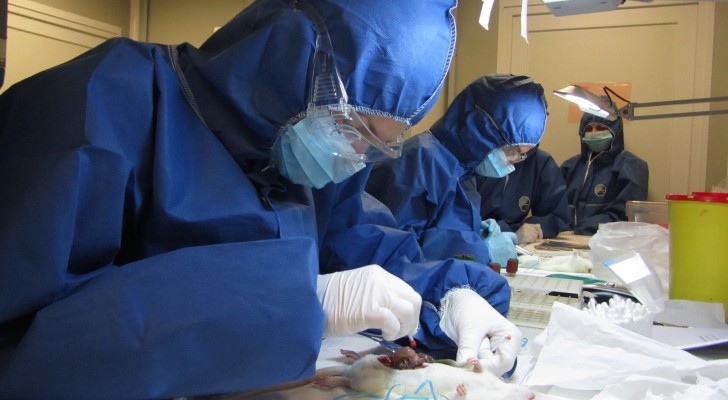Cancer Risk: GMO and Link to Cancer
GMO and Link to Cancer
Cancer is one of the leading causes of death to a number of people. The disease is linked to lifestyle choices like wrong diet and lack of exercise. Other causes of cancer are infections, inheritance of cancer causing genes and chemicals such as carcinogens. Cancer affects your life and puts a stop to some aspects of it.
Everyday new cases of cancer emerge. Just like any other disease, cancer knows no age limits. People across all ages are at the risk of getting cancer. It ends up messing up the body functioning. Why is this so? Well, cancer affects the body cells. Cells are basically the building blocks of the body.
Cancer begins with a tumor. A tumor refers to a mass of tissue that is formed by an overgrowth of cells. Getting cancer depends on whether the tumor is malignant or not. Malignant tumors are basically cancerous while those that aren’t cancerous are referred to as benign tumors.
If left unchecked, cancer can end up being terminal. The good news is that cancer can be cured if it is detected early. Medical experts advocate for regular medical check-ups to ensure that your body is healthy. This allows the doctors to detect problems like cancer early and deal with it before it becomes severe.

Understanding cancer
As explained, cancer starts form a tumor. Cells end up dividing uncontrollably and this leads to development of tumors. These tumors affect the functioning of cells. This translates to entire body dysfunctioning.
There are over 100 types of cancers in the world. Over 1.4 million cases of cancer are reported every year. Cells are damaged and they lose their functioning. When this happens, the cells begin to divide uncontrollably forming masses of tissues.
In normal conditions cells grow and die. Old and worn out cells are replaced by new cells which are generated by the body. In the case of cancer, cells neither wear out nor die. Generation of new cells does not however stop. This clumping of cells in excess is what leads to emergent of the tissue masses we are calling tumors.
One fact about cancer that most people don’t comprehend is that cancer can end up affecting multiple body parts. This happens when cancerous tumors move from one part to another in a process called mitosis. For example, cancerous tumor from the stomach can end up spreading to the colon.
When cancer is detected, the patient is put under medication and therapies to prevent the cancer from spreading. Some treatments of cancer include chemotherapy, radiation therapy and immune therapy among others.
What are GMO?
The term refers to either animals or plants that have been genetically altered. They are created by inserting genes from one organism to another to alter its genetic composition. The organisms are mostly modified to improve the quality of genes in them. Genetically modified plants become resistant to disease and pesticides. They also become resistant to droughts and are able to survive worse drought conditions they never would have surpassed if not modified.
Genetically Modified Organisms have been linked to cancer. Their contribution to causing cancer cannot be overlooked. Many countries today are banning the use of GMO the latest being Russia. Today basically almost every food is genetically modified.
Genetically modified plants grow faster that organic ones. They are a solution to the starving population for most governments. But is it worth the risk? Are GMO really as safe as we are made to believe? The truth is that GMO are unhealthy compared to organic food.
Most of the foods that find their way into our diets are in one way or another genetically modified. Corn and soy are the known modified crops. Therefore avoid eating anything that is made from soy lecithin or corn syrup.
Most animals like chicken, cows and pigs are fed from these genetically modified crops like corm. Therefore GMO ends up finding its way to you through their meat. Always opt for animals you know are grass fed, like those raised in farms.
Organic foods on the other hand are safe and are made from non GMO seeds. Always read the label of cans when purchasing food. Go for foods which are labeled GMO- free as this means that they are not made from any genetically modified organisms.

How GMO can cause cancer
The most common cancer linked to GMO is breast cancer. When GMO are made, the genetic composition of the original plant is altered by inserting genes from another plan. This alters the DNA of the original plant.
Studies show that when DNA is altered it increases a person’s risk of getting cancer. This is because the genetic substances in GMO end up altering the DNA of humans. This alters normal body functioning.
When this happens, a person is at risk getting cancerous tumors. The cells are affected by this DNA modification and due to this they end up functioning abnormally and this is what can lead to cancer.
To find out more about GMO and cancer risks join the AwareMed community. Dr. Dalal Akoury will provide more facts about cancer and how you can avoid it. Contact her for more health and awareness tips.
Cancer Risk: GMO and Link to Cancer


 JRC GMO-Matrix: a web application to support Genetically Modified Organisms detection strategies
JRC GMO-Matrix: a web application to support Genetically Modified Organisms detection strategies


 Genetically Modified Food (DNA)
Genetically Modified Food (DNA)












